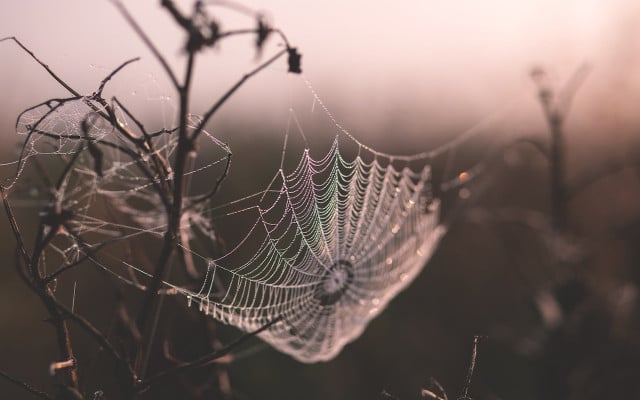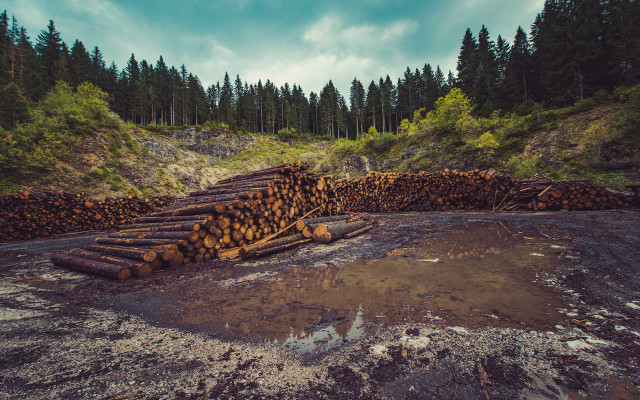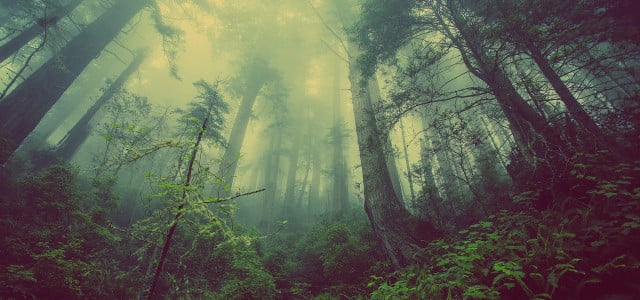Viscose is by far one of the most popular fabrics, but what exactly is it? We’ll look at what viscose is, the environmental impact of this type of rayon fabric, and some alternative fabric options.
Viscose is a semi-synthetic fabric made from wood pulp. It is the most popular form of rayon fabric and is most commonly used as a silk substitute (which is why it’s also known as “artificial silk”). The suspected origins of this fabric are quite interesting. Rumor has it that the fabric was developed in the late 19th century after a silkworm blight made silk completely unaffordable.
How Is Viscose Fabric Made?

Viscose fiber uses wood pulp from beech, pine, eucalyptus, and sometimes even bamboo trees. The wood pulp (or cellulose) is broken down using chemicals like sodium hydroxide and carbon disulfide. The exact process can be easily explained with the following steps:
- Once harvested, the wood is chipped into a pulp and mixed with chemicals like sodium hydroxide. This results in a brown colored wood pulp solution.
- The brown pulp solution is then washed, cleaned, and bleached.
- Once cleaned, the pulp is treated with carbon disulfide and dissolved in sodium hydroxide which creates the mixture known as “viscose”.
- This viscose solution is then passed through a spinneret, which is a machine inspired by silk-spinning insects like silkworms and spiders. This is what enables the viscose to be spun into yarn and further processed into a viscose rayon fabric.
Advantages of Using Viscose
- Absorbent: Viscose doesn’t trap heat. It absorbs both water and sweat, making it great for athletic wear or summer clothing.
- Breathable and Lightweight: As a fabric, viscose is incredibly airy and doesn’t stick to the body. This is why you’ll often find it being used for items of clothing like summer dresses, shirts and blouses.
- Holds Color: Viscose fabric is very accepting of dyes and doesn’t fade with long term use and vigorous washing.
- Maintains Shape: While it is not elastic, viscose rayon fabric can be easily blended with fabrics like spandex to improve movability.
- Soft: A distinct advantage of viscose fabric is that it feels like cotton while looking like silk.
Environmental Impact of Viscose



Despite the fact that viscose fabric is made from natural and renewable resources, the environmental impact of the production process is fairly significant.
Deforestation
Not all the trees used for rayon fabric production come from sustainably managed forests or tree farms. Instead, many old-growth forests have been decimated in the name of fashion, and have taken ecosystems along with it. Luckily, a new report finds that more than half of the global viscose supply is verified as not coming from endangered forests. The winds of change have been brought about through increasing pressure for sustainable and transparent supply chains by consumers.
Water Use
Growing the trees needed to make the semi-synthetic rayon fabric requires a large amount of water. However, the majority of the water is needed to turn the wood pulp into fibers. Studies show that the point-source pollution discharged to freshwater sources (also known as grey water) makes up the majority of water usage for rayon fabric production.
Toxic Chemicals
The production process uses high concentrations of air and water polluting chemicals including sulfur, nitrous oxides, carbon, disulfide, and hydrogen sulfide. These chemicals are often found in air emissions around viscose manufacturing sites, which is not exactly healthy for the planet or the local people. While some argue that the chemicals can be reused, the manufacturing process is not as clean as the production of fabrics like modal or lyocell.
Alternative Fabric Options
As far as sustainable fabrics go, viscose is a much better choice than petroleum-based synthetic fabrics like polyester and nylon. However, there are a few similar options that are kinder to the environment.
- Modal fabric is mainly produced from beech trees. When purchasing, try to look for Tencel brand modal fabric, as the trees they use are guaranteed to be grown in an environmentally conscious manner.
- Lyocell fabric is often made using eucalyptus trees. Once again, Tencel lyocell is the brand to look for because the manufacturing process recycles 99% of the solvent and water used, and the wood comes from sustainably managed forests. This fiber also doesn’t need to be bleached.
- Lenpur viscose, also known as peace viscose, doesn’t cut down any trees for production. Instead, cellulose is harvested exclusively from pruning trees. The production process is similar to lyocell, meaning it does without the use of harsh chemicals.
Do you like this post?







